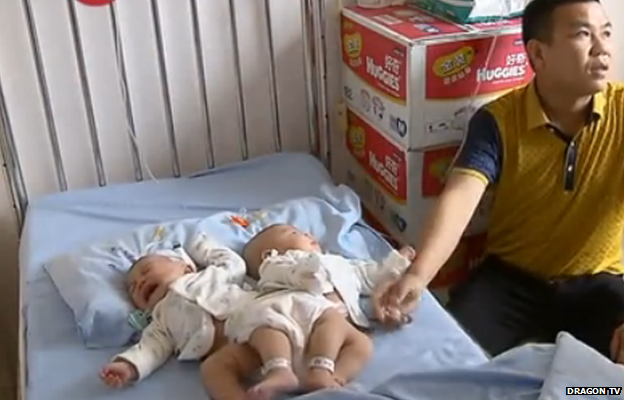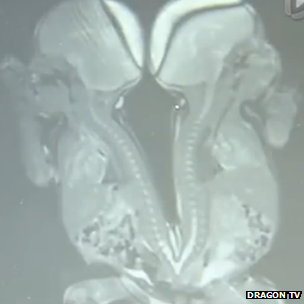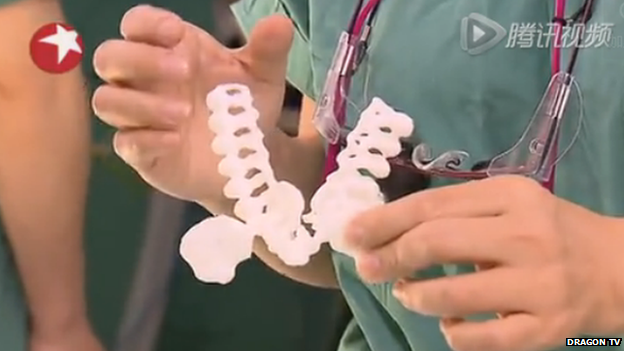China: 3D printer helps separate conjoined twins
- Published

The twins' parents did not know they were conjoined until they were born
Chinese surgeons have used 3D printing technology as part of a successful operation to separate conjoined twins.
The 12-week-old sisters were born connected at the hip and lower spine, and shared one lower bowel, the Xinhua news agency reports, external. On Tuesday, they underwent five hours of surgery at Fudan University Children's Hospital in Shanghai, a centre which specialises in separating conjoined twins. To prepare for the operation, doctors at the hospital sent data gathered from CT and MRI scans to a 3D printing company, which then built two models of the girls' conjoined body parts, the China Daily website reports, external.

A charity donated 200,000 yuan ($32,000; £20,000) towards the cost of the surgery
Surgeons say the resulting replica gave them a better understanding of exactly how to tackle the operation. "It helped us to decide on a more precise starting point on the body," says Dr Zheng Shan, who led the team.
The twins are now under observation in the hospital's intensive care unit, the CCTV news channel says, external. They were born on 17 March in China's eastern Jiangxi Province, and it had not been detected beforehand that they were conjoined.
In 2014, surgeons in the United States used a 3D printer to make a model of a two-week-old baby's heart, which was full of holes and had an unusual chamber layout. Doctors said the 3D model acted, external like a "road map", allowing them to examine the heart's structure ahead of the surgery.

The model helped surgeons to determine how best to approach the complex operation
Next story: Bulgarian tsar statue mocked for glow-in-the-dark eyes
Use #NewsfromElsewhere to stay up-to-date with our reports via Twitter, external.